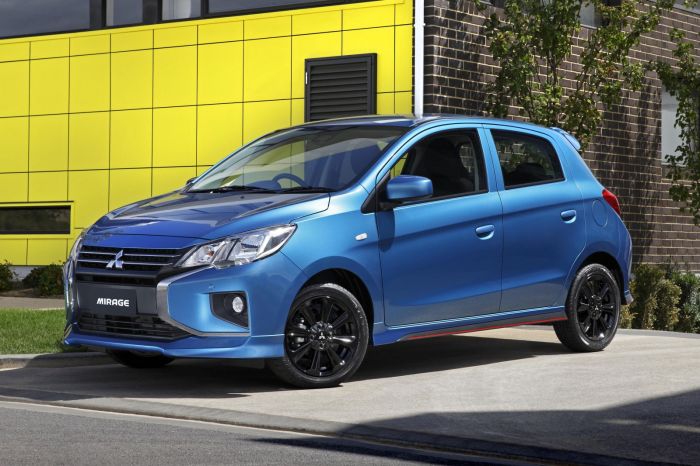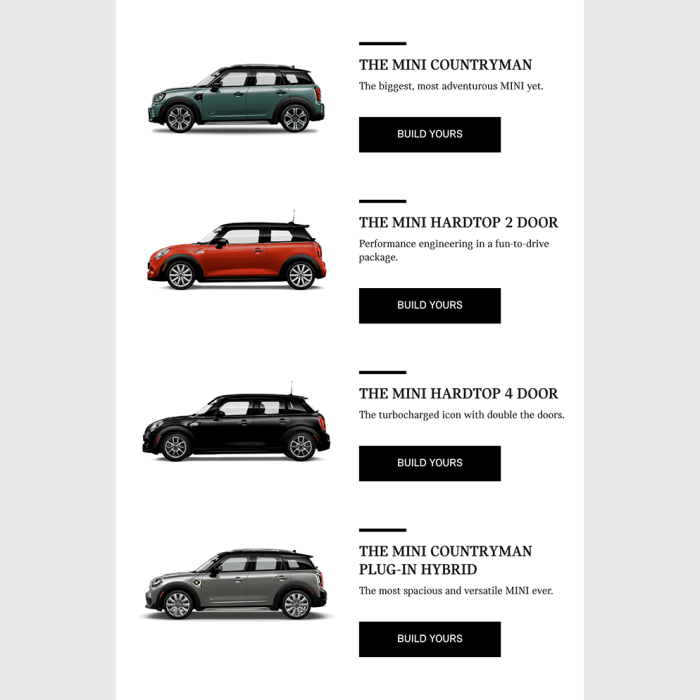Micro Trend Car Brand New Price Analysis
Micro Trends in the New Car Market: Price Fluctuations and Brand Influence
Micro trend car brand new price – The automotive industry is a dynamic landscape, constantly shaped by evolving consumer preferences, technological advancements, and economic shifts. Understanding micro trends – short-lived yet impactful shifts in market demand – is crucial for comprehending fluctuations in new car prices. This analysis explores the definition, identification, and impact of micro trends on new car pricing, focusing on brand influence, geographical variations, and future predictions.
Defining “Micro Trend” in the Car Market
A micro trend in the car market represents a short-term, localized, or niche surge in demand for specific vehicle features, styles, or technologies. Unlike macro trends that influence the market for years, micro trends typically last for a few months to a couple of years. These fleeting shifts can significantly impact pricing, particularly for new car models.
Examples of past micro trends include the surge in popularity of compact SUVs in the early 2010s, driven by rising fuel prices and the desire for fuel efficiency; the temporary increase in demand for convertible cars during periods of extended sunny weather; and the short-lived popularity of certain vehicle colors, often influenced by social media trends and celebrity endorsements.
Several factors influence the emergence of these micro trends. Social media plays a crucial role in amplifying awareness and generating hype around specific features or models. Technological advancements, such as the introduction of new safety features or advanced driver-assistance systems, can also trigger micro trends. Furthermore, economic shifts, like changes in fuel prices or interest rates, can influence consumer preferences and purchasing power, creating short-term demand shifts.
The lifespan of a typical micro trend is relatively short, usually lasting between six months and two years. Its impact on car sales is often substantial during its peak, leading to increased production and potentially higher prices. However, once the trend subsides, the impact on sales diminishes, and prices may adjust accordingly.
Identifying Current Micro Trends Affecting New Car Prices
Currently, several micro trends are shaping the pricing of new cars. Three prominent examples are the ongoing demand for electric vehicles (EVs), the renewed interest in rugged off-road SUVs, and the persistent chip shortage impacting production capacity.
| Micro Trend | Luxury Segment | Economy Segment | SUV Segment |
|---|---|---|---|
| Increased Demand for EVs | High prices due to premium technology and features; strong demand sustains prices. | Moderate price increases due to increased battery costs; demand varies based on model availability. | High demand, leading to price increases across various sub-segments; limited supply contributes to higher prices. |
| Renewed Interest in Off-Road SUVs | High demand for luxury off-road vehicles, maintaining high prices. | Moderate price increases for basic models; demand is concentrated in specific models. | Significant price increases across all sub-segments due to high demand and limited supply. |
| Persistent Chip Shortage | Production constraints lead to higher prices due to limited availability. | Production constraints lead to higher prices and longer wait times. | Production constraints lead to higher prices and longer wait times, especially for popular models. |
Consumer preferences and buying behavior significantly influence these micro trends. For example, the rising awareness of environmental concerns fuels the demand for EVs, while the desire for adventure and versatility drives the popularity of off-road SUVs. The chip shortage, however, is largely beyond direct consumer influence, affecting pricing through supply-chain disruptions.
Impact of Brand on Micro Trend Price Fluctuations

Source: com.au
Established car brands often demonstrate less price sensitivity during micro trend periods compared to emerging brands. Their established reputation and brand loyalty allow them to maintain higher prices even when faced with fluctuating demand. Emerging brands, on the other hand, may need to adjust their pricing more aggressively to compete and capture market share.
For instance, Tesla, as an established EV brand, can command higher prices for its vehicles due to its brand recognition and technological advancements. In contrast, newer EV startups may need to offer more competitive pricing to attract buyers. A brand’s reputation for quality, reliability, and innovation significantly influences its ability to capitalize on or mitigate micro trend price changes.
- Strategic pricing adjustments based on real-time demand analysis.
- Leveraging brand equity to justify premium pricing during periods of high demand.
- Offering limited-edition models or special packages to capitalize on micro trends.
- Implementing effective inventory management to mitigate the impact of supply chain disruptions.
- Utilizing targeted marketing campaigns to influence consumer preferences and demand.
Geographic Variations in Micro Trend Car Pricing, Micro trend car brand new price
A hypothetical map illustrating the geographical distribution of increased demand for electric vehicles would show higher concentration in regions with strong government incentives, well-developed charging infrastructure, and environmentally conscious populations (e.g., California, Norway, several European Union countries). Conversely, regions with limited charging infrastructure or less favorable government policies would exhibit lower demand and potentially lower prices for EVs.
Regional economic conditions play a significant role in influencing car prices during micro trends. Areas with higher disposable incomes and stronger economies may exhibit higher demand and prices, particularly for luxury vehicles. Conversely, regions facing economic downturns might experience reduced demand and price adjustments, especially for less essential vehicle types.
Government regulations and incentives significantly shape micro trend car pricing in different regions. Tax credits, subsidies, and emission standards influence consumer choices and the overall market dynamics, creating variations in pricing across geographical locations. For example, government subsidies for electric vehicles in some countries have significantly lowered their prices, making them more accessible to consumers.
Predicting Future Micro Trends and Their Price Implications

Source: merkle.com
Understanding micro trends in new car pricing requires examining individual models. For instance, a quick look at the current market reveals valuable insights; you can check the maruti swift new car price to see how a popular model is priced. This analysis, when repeated across various brands and models, provides a broader picture of micro trends affecting the overall new car market.
Potential future micro trends impacting new car prices include the increasing adoption of autonomous driving features, the growing demand for subscription-based vehicle services, and the potential rise of hydrogen fuel cell vehicles.
Technological advancements, such as advancements in battery technology, artificial intelligence, and connectivity, will drive future micro trends. The development of solid-state batteries, for example, could lead to a surge in demand for EVs with longer ranges and faster charging times. Similarly, advancements in autonomous driving technology could significantly impact consumer preferences and pricing.
Different economic scenarios could significantly influence the impact of future micro trends on pricing. A strong global economy could lead to increased demand for high-tech features and luxury vehicles, pushing prices upward. Conversely, an economic recession could lead to reduced demand and price adjustments, particularly for less essential vehicle types.
Visual Representation of Micro Trend Price Data
The following table illustrates the price fluctuation of a hypothetical electric SUV model during a recent micro trend period (e.g., increased demand for EVs in Q3 2023):
| Month | Average Price |
|---|---|
| July 2023 | $50,000 |
| August 2023 | $52,000 |
| September 2023 | $55,000 |
| October 2023 | $53,000 |
Caption: This data shows a clear price increase in the hypothetical electric SUV model during the peak of the increased demand for EVs in Q3 2023, followed by a slight price correction in October. The data suggests that micro trends can have a significant, yet temporary, impact on pricing.
Alternative ways to represent this data include: a line graph showing the price trend over time; a bar chart comparing average prices across different months; and a scatter plot showing the relationship between demand and price.
FAQ: Micro Trend Car Brand New Price
What is the typical lifespan of a micro trend in the car market?
Micro trends in the car market can vary, but generally last from several months to a couple of years before being replaced by newer trends.
How do social media influencers impact car micro trends?
Social media influencers can significantly impact micro trends by shaping consumer perception and driving demand for specific features or vehicle types.
Are there any ethical considerations related to manipulating micro trends for profit?
Yes, artificially inflating demand or creating false scarcity through marketing tactics raises ethical concerns regarding transparency and consumer protection.
How can consumers protect themselves from price gouging during micro trend periods?
Consumers can protect themselves by researching prices across dealerships, comparing models, and being aware of potential price inflation during periods of high demand.





















